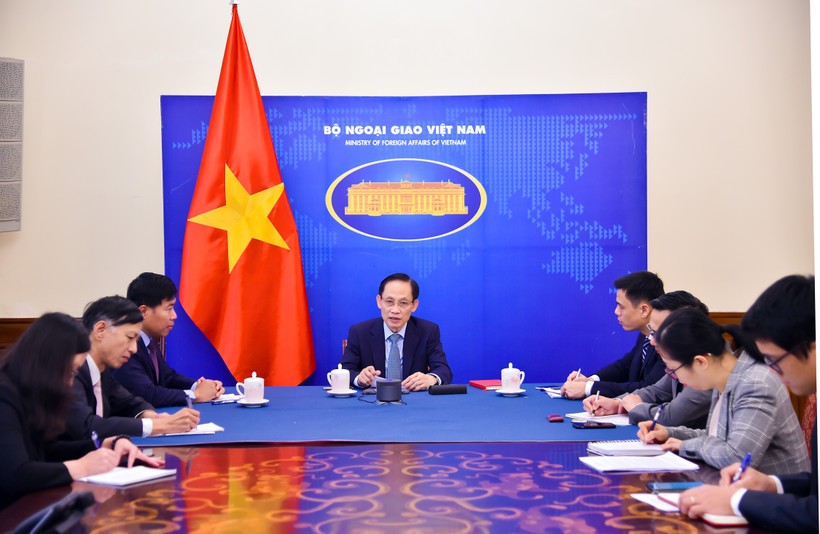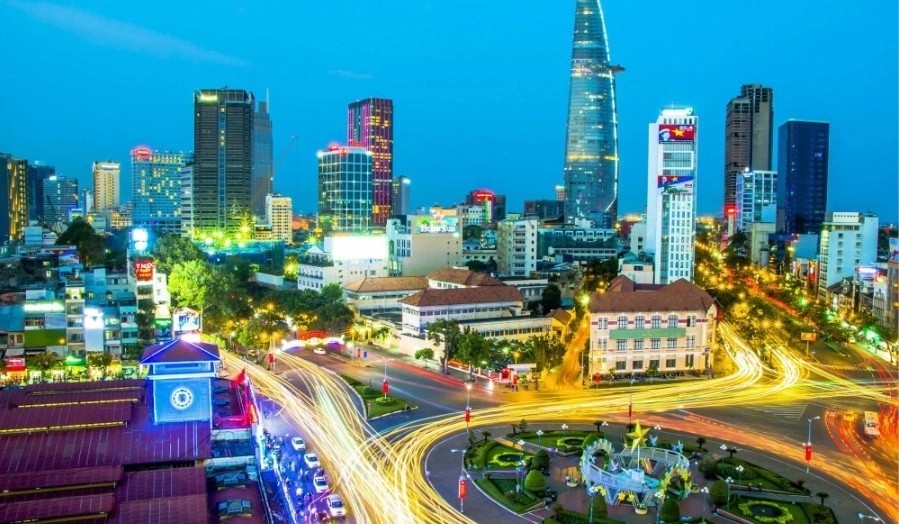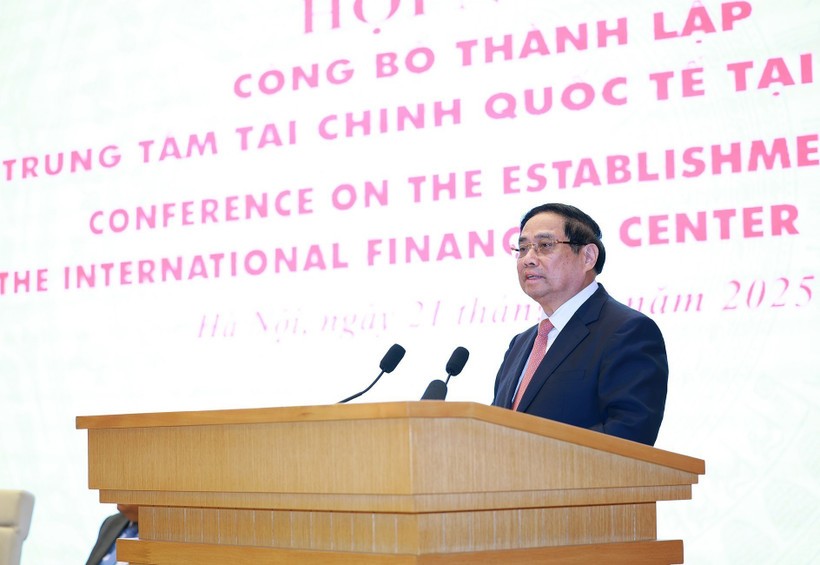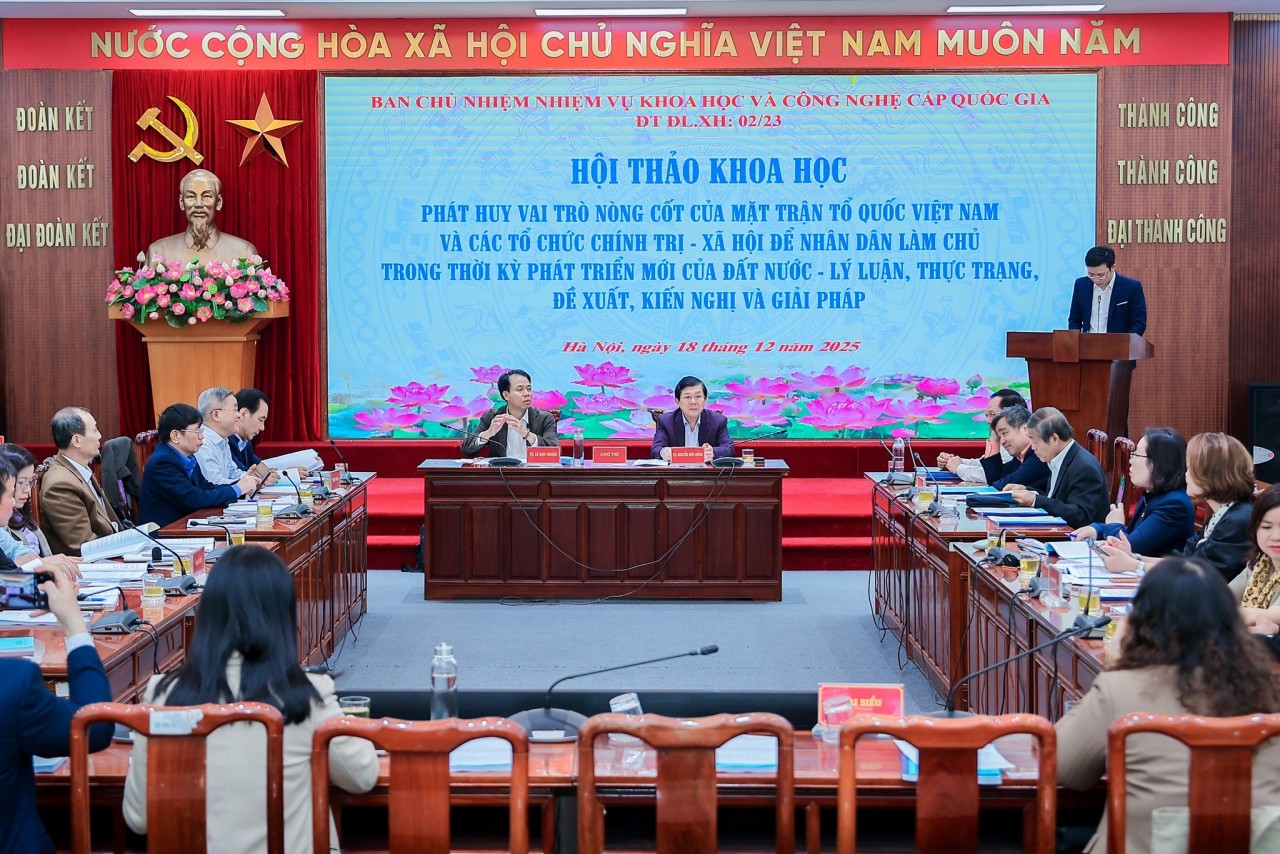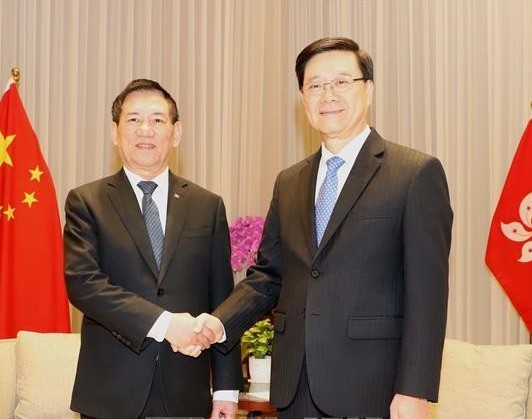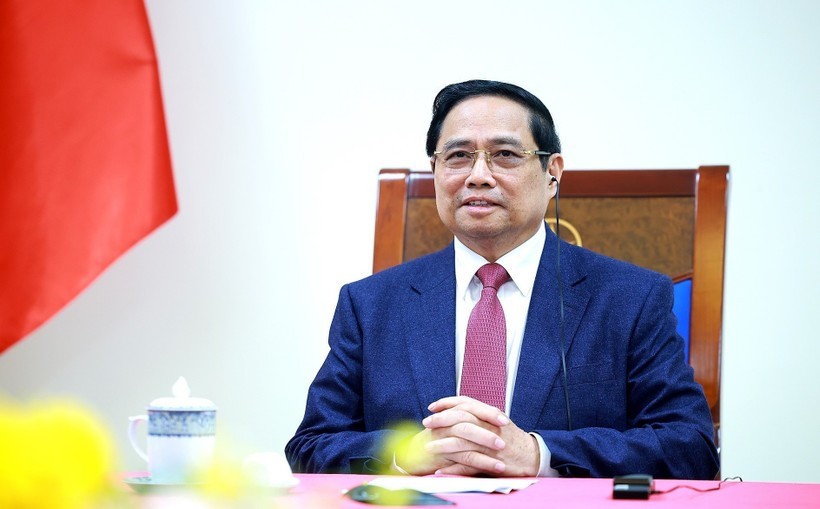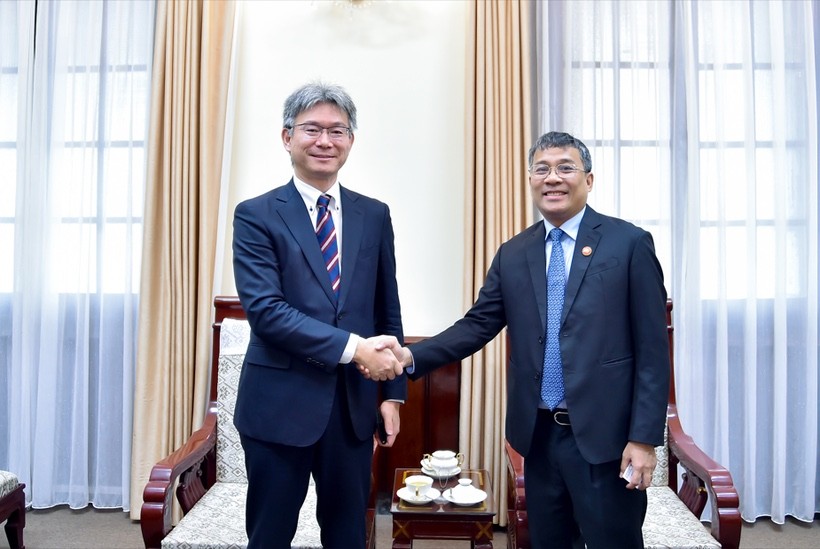EVFTA helps thrive EU-Vietnam trade: Czech Minister
Czech Minister of Industry and Trade Lukáš Vlček has highlighted the significant progress in EU-Vietnam trade relations five years after the EU-Vietnam Free Trade Agreement (EVFTA) took effect on August 1, 2020.
Speaking to Vietnam News Agency correspondents in Prague, Vlček said bilateral trade between the EU and Vietnam has grown steadily by 12–15% annually, reaching over 60 billion EUR (70 billion USD) in 2024. He attributed this growth to the gradual removal of tariffs under the EVFTA, which has helped Vietnam become the EU’s top exporter in ASEAN, contributing to higher economic growth, job creation, and improved consumer access to quality European goods.
While the EU still records a trade deficit with Vietnam, Vlček noted that European companies have benefited from broader market access and global supply chain diversification. The Czech Republic, in particular, has seen fast-growing ties with Vietnam, which is now its largest trading partner in the Association of Southeast Asian Nations (ASEAN). Two-way trade hit a record 4 billion EUR in 2024, reflecting deeper cooperation based on strong diplomatic engagement and a Vietnamese community of about 70,000 people—the third largest in Europe.
The minister stressed that the EVFTA has proven to be an essential economic tool, especially amid global disruptions such as the COVID-19 pandemic, geopolitical tensions, and rising protectionism. Vietnamese industries such as electronics, textiles, and food have thrived under the agreement, driven by tariff cuts and rising EU demand. Companies that quickly adapted to EU standards have gained early market access.
For the Czech industry, tariff reductions on auto parts and assembly rules under the EVFTA have facilitated localisation of production in Vietnam. Vlček cited the example of Czech automaker Škoda Auto, which entered the Vietnamese market in partnership with local firm Thanh Cong Motor in September 2023 and inaugurated a production line in Quang Ninh province in March.
He said the project represents a milestone in Czech-Vietnamese cooperation, creating jobs, expanding industrial capacity, and attracting foreign investment. Vietnam is expected to serve as a manufacturing hub for Škoda Auto and other Czech firms looking to scale operations across Southeast Asia, according to VNA.
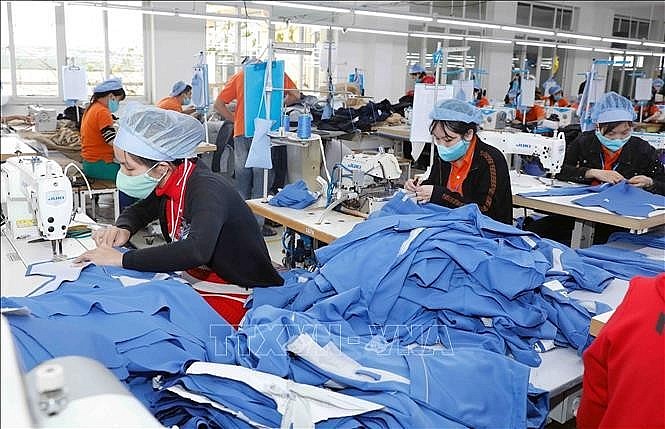 |
| Garment production for export at Hung Viet Garment Company in Hung Yen province. (Photo: VNA) |
The partnership between Škoda Auto and Thanh Cong Motor is an example of an emerging trend of joint ventures combining Czech technology and Vietnamese manufacturing capacity under the EVFTA’s favourable rules of origin, creating a scalable model for regional output.
However, Vlček acknowledged ongoing challenges in EVFTA implementation. These include delays in import registration, strict requirements even for EU-certified products, and unresolved issues like meat export licensing. Additional barriers include complex regulations, inconsistent recognition of international standards, and technical hurdles such as certification and product testing.
Czech companies also face language barriers and limited access to business environment information when entering the Vietnamese market.
He described Vietnam an “economic dragon” of Asia and one of the world’s fastest-growing markets, noting that reforms to reduce administrative burdens and enhance the legal environment are encouraging for European investors.
Looking ahead, he urged Vietnam to adopt more incentives for green technology and e-mobility projects, including charging infrastructure. He also emphasized the need for full ratification of the EU-Vietnam Investment Protection Agreement (EVIPA) to unlock the EVFTA’s full potential. The Czech Republic, one of the first EU countries to ratify the EVIPA, will continue urging other member states to do the same, he stated.
National Geographic suggests must-visit war memorial sites in Vietnam
As Vietnam prepares to commemorate the 80th anniversary of National Day (September 2, 1945 – 2025), National Geographic, one of the world’s premier travel publications, has spotlighted eight war memorial sites in Vietnam that offer visitors powerful and educational experiences.
Despite the country’s remarkable progress since the war, Vietnam continues to honor its past through numerous museums and monuments that preserve the memory of its turbulent history. These locations have become essential destinations for history enthusiasts and those seeking deeper insight into Vietnam's journey, according to National Geographic.
Topping the list is the War Remnants Museum, home to an extensive collection of wartime artifacts including aircraft, weaponry, and unexploded ordnance. The museum provides a sobering look at the impacts of war, drawing countless visitors each year.
Formerly the Presidential Palace of South Vietnam, the Reunification Palace offers guided tours that include the underground war bunkers. Visitors can explore rooms still fitted with vintage communication equipment and period furnishings, VOV reported.
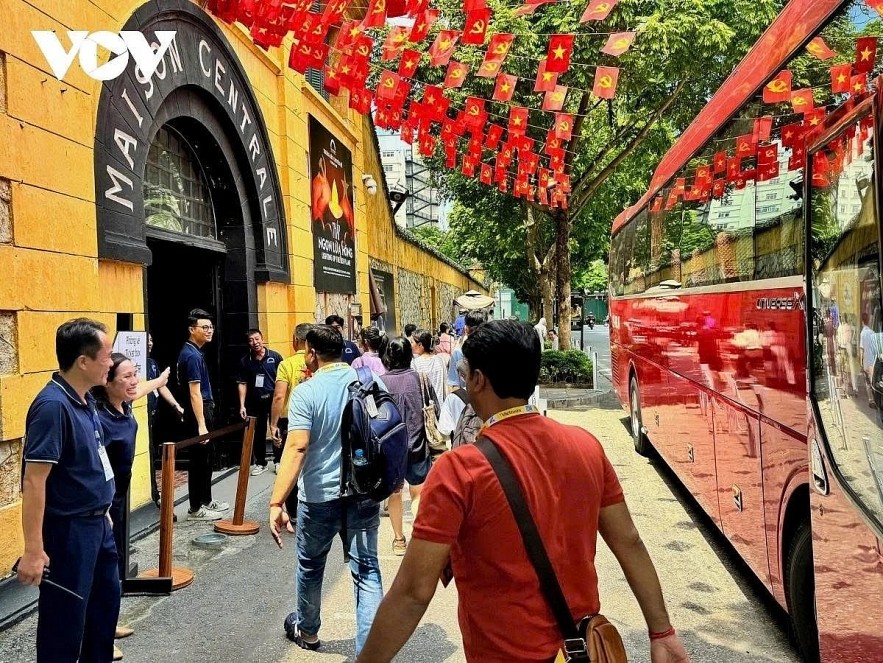 |
| Hoa Lo Prison in Hanoi is among must-visit war memorial sites in Vietnam. |
At Cu Chi Tunnels, guides lead visitors through narrow, camouflaged entrances into the underground tunnel network once used by Vietnamese soldiers. It provides a unique, firsthand glimpse into the conditions endured during wartime.
Located on the site of the My Lai Massacre, the Son My Memorial honors the victims of one of the most tragic events of the US-waged war in Vietnam. Despite its dark history, the peaceful setting, complete with rose-lined gardens and a reflective museum, invites quiet remembrance.
In Quang Tri province, tourists will have the chance to visit several sites which made up the most strategically important places during the war against American imperialism. Once the dividing line between North and South Vietnam, the Demilitarised Zone was one of the most contested areas during the war. Today, visitors can explore historic battlefields and learn about the area's significance.
Also in Quang Tri, Vinh Moc Tunnels served as a sanctuary for civilians during intense bombing campaigns. Between 1966 and 1972, 90 families lived underground in a complex that includes living quarters, a maternity room, and meeting spaces.
The Vietnam Military History Museum in Hanoi offers a comprehensive look at Vietnam's military past, with exhibitions of weapons, photographs, letters, and personal belongings from both soldiers and civilians. It provides an emotional and detailed perspective on the country’s fight for independence.
Last but not least, Hoa Lo Prison, known to American POWs as the "Hanoi Hilton," once housed captured U.S. pilots, including late Senator John McCain. The museum features personal effects from inmates and explores the prison’s evolution over the years.
Trade turnover jumps 16.2% from January to mid-July
Vietnam’s trade turnover reached US$470.63 billion from January 1 to July 15 this year, a 16.2 percent year-on-year increase, according to the Department of Vietnam Customs.
Of the figure, exports were estimated at US$239.19 billion, up 14.7 percent year-on-year, while imports climbed 17.7 percent to US$231.44 billion.
Foreign direct investment (FDI) enterprises recorded US$14.83 billion in export value during the first half of July, a decline of 13.5 percent compared to the second half of June. On the import side, FDI firms brought in US$13.84 billion in goods, representing a 4.4 percent increase.
By mid-July, cumulative export value by FDI businesses stood at US$175.8 billion, a 17.5 percent rise over the same period in 2024, contributing 73.5 percent of Vietnam's total export volume. Their total import value reached US$153.31 billion, up 22.7 percent, accounting for 66.2 percent of the country's overall imports, VGP reported.
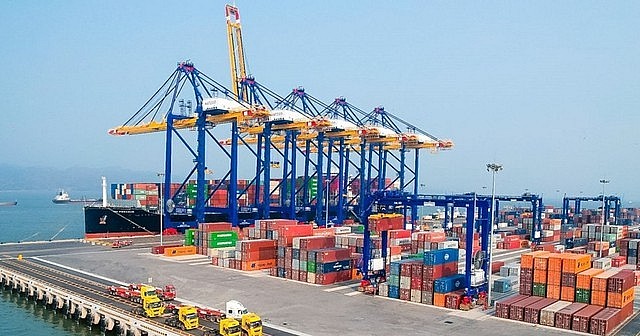 |
| Photo: VGP |
Despite recording a trade deficit of US$134 million in the first half of July, Vietnam still maintained a trade surplus of US$7.74 billion from January 1 to July 15.
Vietnam has set a 2025 export growth target of 12 percent, equivalent to about US$450 billion in export turnover. Export target for 2025 is US$454 billion, up 12 percent compared to 2024.
Vietnamese to have four-day National Day holiday
Vietnam’s National Day holiday, the final holiday of 2025, will last four days, from August 30 to September 2, the Ministry of Home Affairs has announced.
Specifically, civil servants and public employees will have time off from Saturday (August 30) through Tuesday (September 2), including two days for the official holiday and two regular weekend days.
State agencies are required to arrange on-duty staff to ensure continued public services and to handle any unexpected matters. For those organizations that do not follow a fixed weekend schedule, holiday leave should be arranged in accordance with their specific operational plans.
Private sector employers are responsible for deciding their workers' National Day holiday schedule, but they must notify employees at least 30 days in advance. For workers outside the administrative sector, such as those in private enterprises and non-governmental organizations, employers may choose either Monday (September 1) or Wednesday (September 3) as the additional day off, alongside the official holiday on Tuesday (September 2), depending on production and business needs.
The ministry encourages private employers to adopt the same holiday schedule as public sector workers to promote uniformity.
Authorities at all levels are also urged to prepare and implement practical plans to support economic and social activities during the break. These efforts should aim to stabilise supply and demand, maintain price and market stability, promote production and business activity and contribute to overall economic growth, VNA reported.
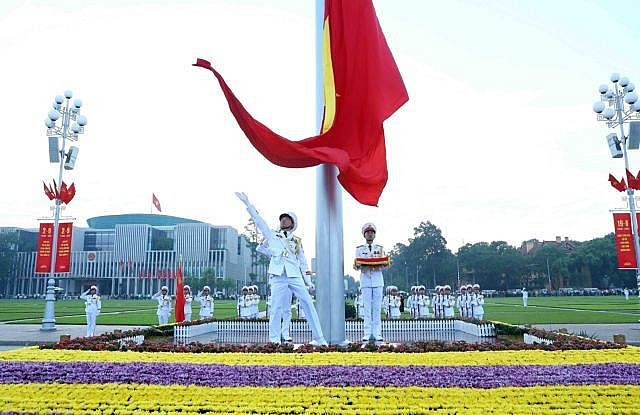 |
| A flag-raising ceremony at Ba Dinh Square in Hanoi (Photo: VNA) |
The Government emphasized the importance of efficient use of resources and cost-saving measures to help meet the objectives for 2025, a pivotal year for accelerating progress toward the country’s five-year development goals and laying a solid foundation for sustainable growth in the years ahead.
In the capital city of Hanoi, the grand celebration, military parade and march for the 80th anniversary of the August Revolution and National Day will start at 6.30am on September 2 at Ba Dinh Square and through several central streets.
As many as 30,000 people will participate in the event, not including the parade and marching forces, according to the Ministry of National Defense project on military parade and march organization.
Hanoi has also planned fireworks displays at five locations: Hoan Kiem Lake, Thong Nhat Park, Van Quan Lake, My Dinh National Stadium and West Lake on the evening of September 2.
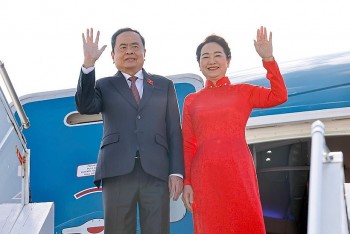 | Vietnam News Today (Aug. 1): Party chief orders breakthroughs in military modernisation, PM Pham Minh Chinh updates Diplomatic Corps on local governance reform, NA Chairman ... |
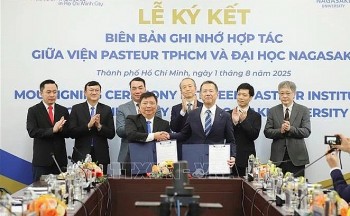 | Vietnam News Today (Aug. 2): Vietnam - a driving force in ASEAN’s progress; Hanoi ranks among world’s top 13 cities for unforgettable cuisine; EVFTA boosts ... |



